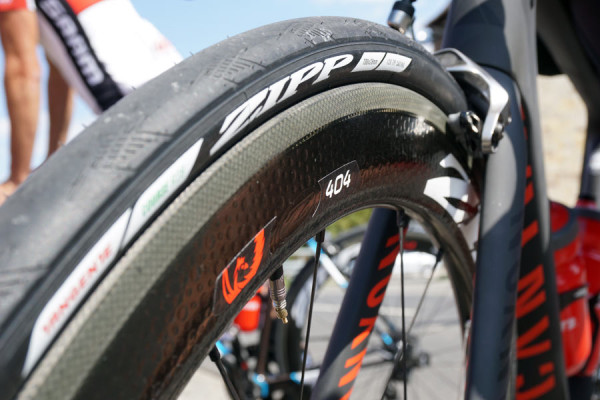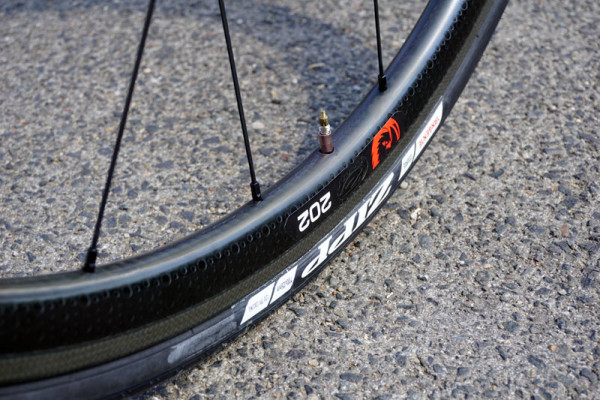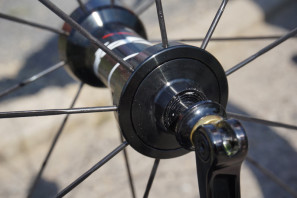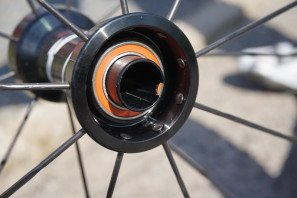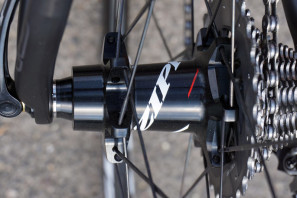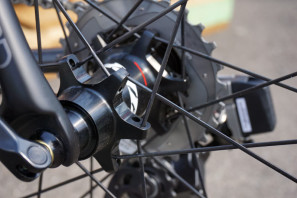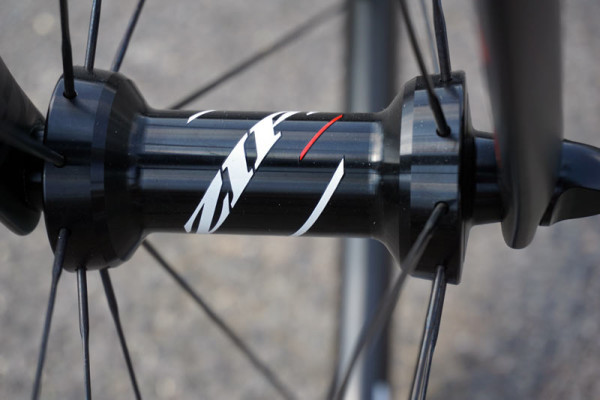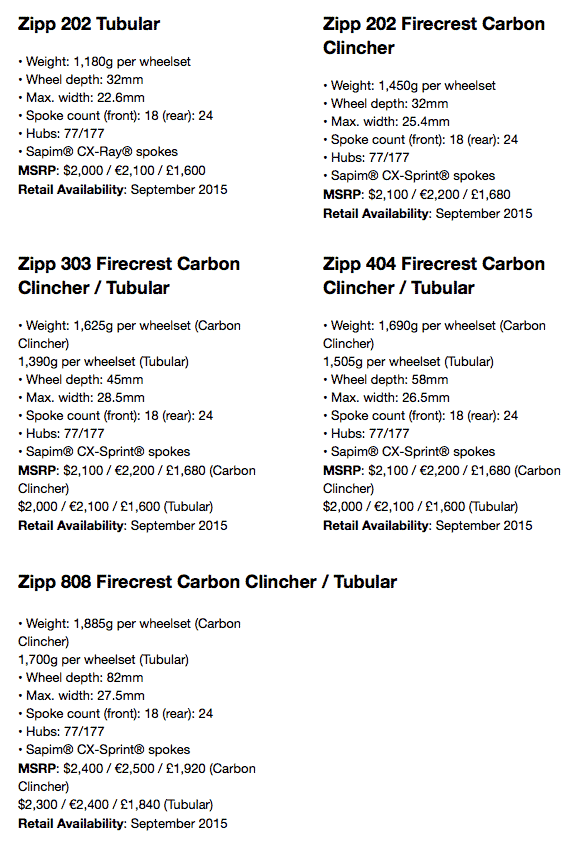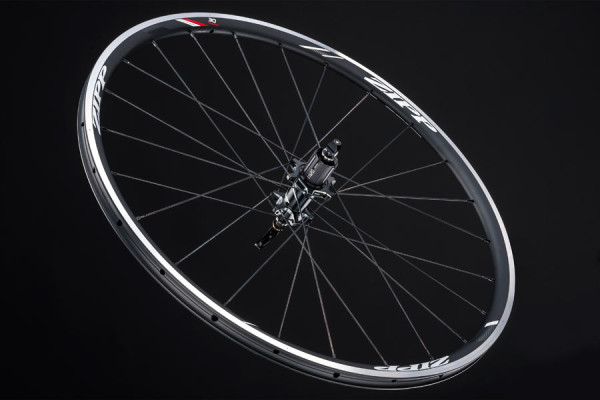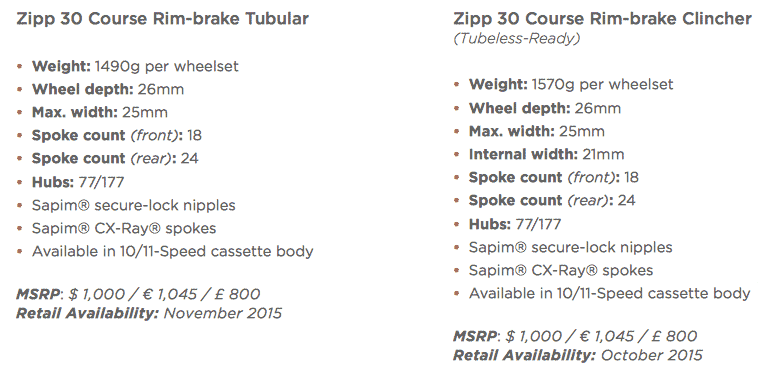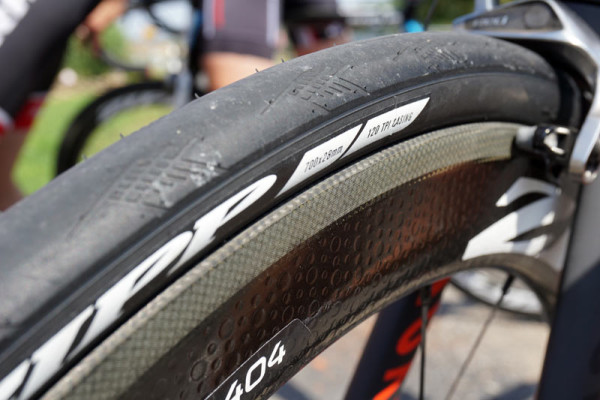For 2016, Zipp’s reference wheels get upgraded hubs, the tires get wider and their 30 Course alloy wheelset gets a rim brake option, adding to the disc brake set introduced in April. Before we dive into the details, here’s a bit of history on the brand (if you’re already a fan, skip ahead two pics).
Zipp was founded by Leigh Sargent, who came from an F1 background. The story goes that a cyclist brought him a disc wheel and he said he could do better. He did, cutting the weight in half by making it out of carbon fiber. Then he pioneered the use of the wind tunnel in cycling, bringing that over from F1, and now they use it extensively at the ARC in Indianapolis. They’ve done things like bike frames (2001, 3001), tri spoke wheels and even carbon cranks. They don’t make those items any more, but they do continue to push carbon development on their wheels, and the latest is their Firecrest rims…
Their lead engineer, Michael Hall, came from GM’s IRL division and was very familiar with the ARC. He brought that knowledge over to develop the original Firecrest designs. The goals then were combining aerodynamic efficiency and stability with braking performance and durability.
The Firecrest design brought about the now common blunt rim profiles. These improved stability in crosswinds by helping keep the air flow closer to the rim rather than striking off the backside of a pointy edge and creating low pressure zones. Those pressure differentials are what can make the wheel feel like it’s being pushed sideways. The Firecrest design puts the center of pressure close to the steering axis, which limits the torque that winds can put on the system.
The dimple patterns used on Zipp’s wheels help further by reducing vibrations caused by the wind vortices shedding from the rim. This aids stability, but also reduces rider fatigue.
Add in Zipp’s proprietary resin mix to withstand braking temps over 600ºF, plus decent modulation and power thanks to their own brake pads, and you end up with an all around solid performer that’s tough enough for everyday riding. And one they’re proud to say is almost always the benchmark against which the competition compares their wheels, too.
So, how to make it better?
Rims are great, but they need to built into a wheel, so for 2016, the attention has been focused on improving their hubs. The new 77/177 hubset gets a precision bearing preload that’s set at the factory rather than being user adjustable and a bigger 17mm axle.
The larger diameter axle provides a more robust connection in the frame and a stiffer platform for the bearings to roll on, which improves durability and performance.
The freehub sticks with their 10º (36 point) engagement, but it’s now compatible with the XD Driver Body, too.
If this sounds familiar, it’s because most of this tech was introduced on the disc brake versions released earlier this year. Now it’s available in rim brake clincher and tubular versions of the Firecrest 202/303/404/808 wheels and the 404 Firecrest 650C set.
Hubset weight is identical to the previous 88/188, with 5g shifting from front to rear. The new 77/177 hubs are 110g front and 250g rear (compared to 115g/245g for 88/188). They’re thru axle compatible, too, just by swapping end caps, but they’ll come with new quick release skewers that have a wider, more ergonomic lever. All wheels are laced with Sapim CX Sprint spokes except the 202 tubular, which gets CX Ray.
New hubs…maybe not the groundbreaking change you’d expected. So here’s some big news: They’re dropping prices across the entire Firecrest lineup, coming in a few hundred dollars less than the prior versions:
The disc brake Firecrest wheels saw a similar price drop when they launched earlier this year using the new 77/177 hubs (except in disc brake versions, obviously). The higher end Firestrike rims carry over unchanged for now, but they hinted they may go on sale soon, suggesting changes are coming.
The 30 Course alloy wheels gains a rim brake version. Like the disc brake version introduced earlier this year, it’s tubeless ready, and it also gets the new 77/177 hubs.
It’s a low profile aero design that’s wider, coming up in at 25mm wide (21mm internal for clincher), which mates up nicely to their new tire widths:
The Speed tires gain a 28mm width, and the Course tire also gets the 28 plus a massive 30mm option. Not only do you get the added compliance and comfort of the larger air volume, but their CRR (Coefficient of Rolling Resistance) showed the 28mm to have lower rolling resistance by 8 watts compared to the 25mm tire.
Don’t let the widths fool you – all of them are high performance road tires, not gravel or dirt road tires. That said, it is a new tread pattern that’s supposed to have better wet weather performance compared to the narrower versions, which were designed primarily for dry conditions.
The tires are all still tube-type, as are all the carbon rims. They readily admit that tubeless is the future of road, and they’re working on it. But they want to create something that has the ride quality of tubulars, and they say they’re not quite there…yet.
